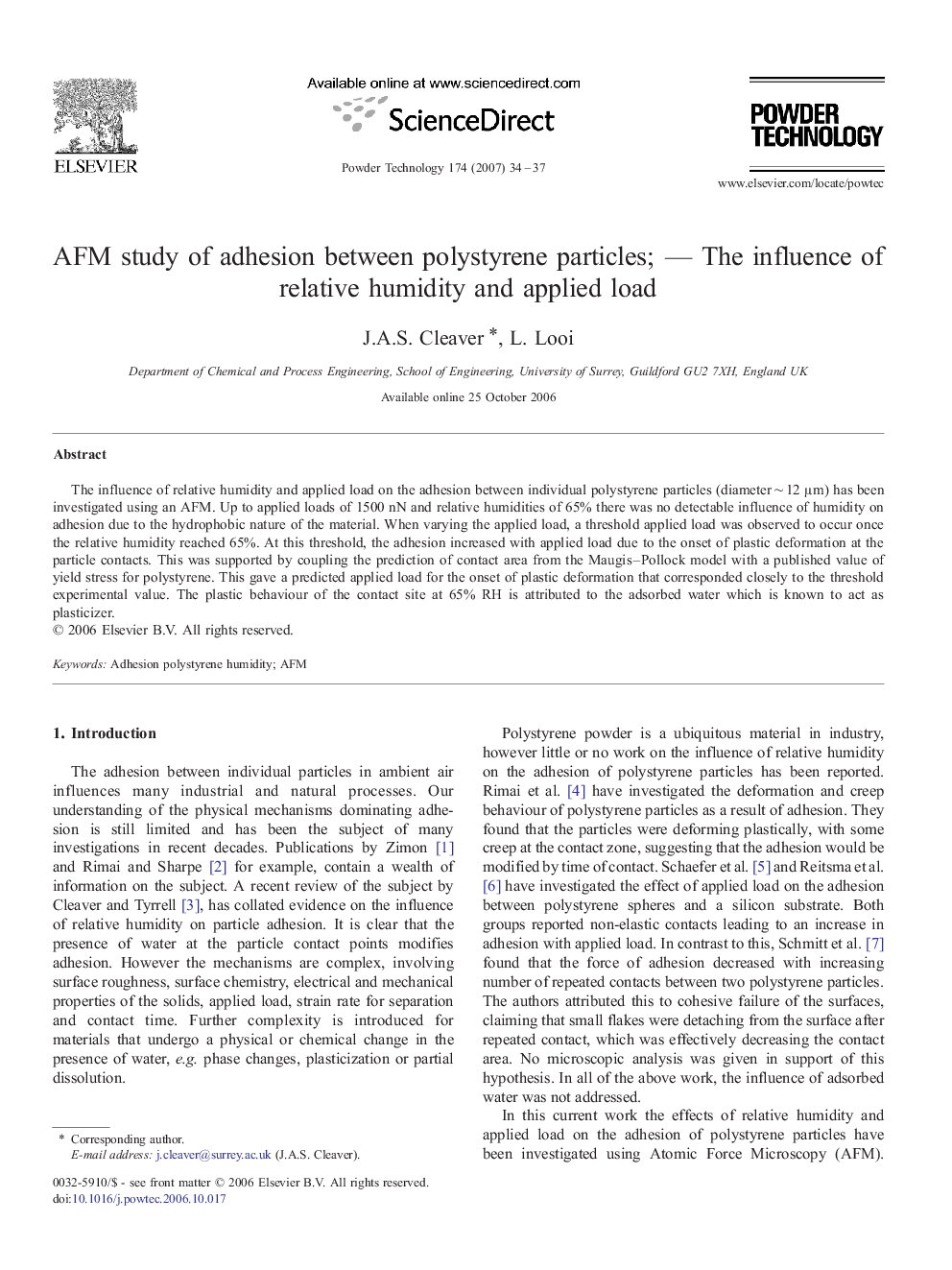| کد مقاله | کد نشریه | سال انتشار | مقاله انگلیسی | نسخه تمام متن |
|---|---|---|---|---|
| 239193 | 465803 | 2007 | 4 صفحه PDF | دانلود رایگان |

The influence of relative humidity and applied load on the adhesion between individual polystyrene particles (diameter ∼ 12 μm) has been investigated using an AFM. Up to applied loads of 1500 nN and relative humidities of 65% there was no detectable influence of humidity on adhesion due to the hydrophobic nature of the material. When varying the applied load, a threshold applied load was observed to occur once the relative humidity reached 65%. At this threshold, the adhesion increased with applied load due to the onset of plastic deformation at the particle contacts. This was supported by coupling the prediction of contact area from the Maugis–Pollock model with a published value of yield stress for polystyrene. This gave a predicted applied load for the onset of plastic deformation that corresponded closely to the threshold experimental value. The plastic behaviour of the contact site at 65% RH is attributed to the adsorbed water which is known to act as plasticizer.
Below an applied load of 1500 nN and relative humidity of 65% the contact between particles of 12 μm diameter was essentially elastic. When varying the applied load at a relative humidity of 65%, a threshold load was observed at which the adhesion increased with applied load due to the onset of plastic deformation at the particle contacts.Figure optionsDownload as PowerPoint slide
Journal: Powder Technology - Volume 174, Issues 1–2, 16 May 2007, Pages 34–37